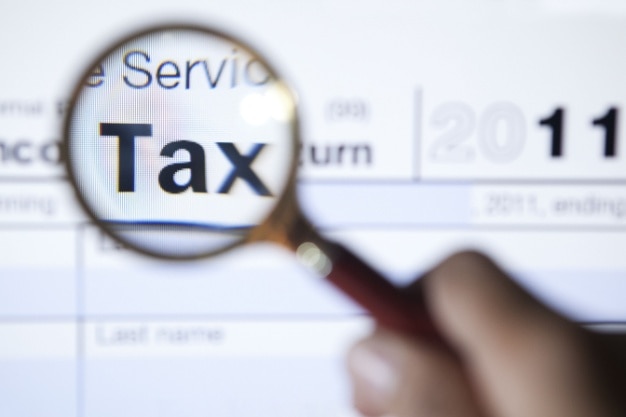Your Retirement Simplified: Navigating RMDs Effectively
March 15, 2024

There was a time, not too long ago, when the mere mention of Required Minimum Distributions (RMDs) would send even the most seasoned investors into a spiral of confusion. It sounded like something out of an arcane financial textbook, didn’t it? Fast forward to today, and here we are, standing at the precipice of retirement planning with RMDs no longer lurking in shadows but spotlighted center stage.
The clock ticks differently once you hit that golden age—72 for many; earlier if you’re leafing through history’s pages. The IRS isn’t just knocking; they’re practically part of your family now. But wait! Before you start picturing them at your Thanksgiving dinner table asking about your IRA over turkey and stuffing, let’s take a breath.
RMDs aren’t just numbers on a page or cold calls from federal agencies—they’re milestones marking years well spent and investments maturing alongside fine wine in your cellar. Yet somehow, despite their inevitability in our lives as retirees or soon-to-be, the concept of Required Minimum Distributions (RMDs) often remains shrouded in confusion and apprehension. But understanding them is key to ensuring your golden years are exactly that—golden.
Table Of Contents:
- Navigating the Basics of Required Minimum Distributions (RMDs)
- The Purpose Behind RMDs
- Calculating Your RMD
- The Consequences of Missing Your RMD
- Tax Implications of RMDs
- Strategies for Managing Your RMDs
- Roth IRAs and RMDs
- Conclusion
Navigating the Basics of Required Minimum Distributions (RMDs)
Let’s get down to brass tacks with RMDs, shall we? They might sound complex, but once you get the hang of it, they’re as easy as pie.
Understanding What RMDs Are
So what are these Required Minimum Distributions (RMDs) everyone keeps talking about? Think of them as your retirement account’s way of saying, “Hey, let’s start using this stash.” It’s all about ensuring you withdraw and use a portion of your savings post-retirement. And yes, Uncle Sam wants his share in taxes too.
Accounts Subject to RMDs
You’ve got a few types of accounts that fall under the RMD umbrella:
- Traditional IRAs: Your go-to retirement account.
- SIMPLE IRAs and SEP IRAs: For those who like their acronyms with a side of employment benefits.
- Employer-sponsored plans: Like 401(k)s and 403(b)s—because who doesn’t love more numbers?
The magic number for starting these withdrawals is generally 72, unless you’re part of the crowd born before July 1st, 1949 – then it’s at 70½. Talk about specifics.
Riding into sunset years requires some planning; navigating through RMD land is one crucial step on that journey. So gear up. Because knowing when to dip into your treasure chest can save you from quite a bit hassle—and penalties down the road.
The Purpose Behind RMDs
So, you’ve been stashing away cash in your retirement accounts like a squirrel with acorns. But here’s the kicker: Uncle Sam has his eye on those savings too. Enter Required Minimum Distributions (RMDs). Let’s break down why they’re not just another hoop to jump through but a crucial part of the retirement puzzle.
Understanding What RMDs Are
RMDs are Uncle Sam’s way of saying, “Hey, it’s time to start using that retirement stash and pay some taxes.” They make sure you withdraw at least a bit of your hard-earned cash each year after reaching age 72. Why? Because most folks haven’t paid taxes on these funds yet.
Accounts Subject to RMDs
If you’ve got a traditional IRA, SEP IRA, SIMPLE IRA, or any employer-sponsored plan like a 401(k), listen up. You’re in the RMD club. The clock starts ticking at age 72 for most people (70½ if you hit that milestone before July 1st, 1949). That means planning is key unless giving half your missed withdrawal amount as penalty sounds fun (spoiler alert: it doesn’t).
The gist?
- RMD rules ensure retirees don’t just sit on their tax-deferred savings forever.
- This mechanism ensures taxes get paid eventually—on distributions rather than contributions.
- Failing to take an RDM leads to hefty penalties—a wake-up call no one wants.
But hey, here’s the silver lining: understanding and managing your RMDs can lead to smarter financial strategies in retirement. It turns out; there’s method behind what might seem like madness from our friends at the IRS.
Remember: diving deep into this now could save you heaps later.
Calculating Your RMD
Unraveling the enigma of figuring out your Required Minimum Distribution (RMD) is akin to solving a puzzle. Think of it as a recipe, but instead of baking a cake, you’re ensuring your retirement savings are served up just right. The main ingredients? Your account balance and life expectancy.
Understanding What RMDs Are
RMDs aren’t just random numbers financial wizards pull out of hats. They’re carefully calculated to make sure you have enough to spend during retirement without running out too soon. It’s all about finding that sweet spot.
Accounts Subject to RMDs
If you’ve got a traditional IRA, SEP IRA, SIMPLE IRA, or an employer-sponsored plan like a 401(k), congrats. You’re in the club. And by club, I mean folks who need to start withdrawals at age 72—or sooner if you were born before July 1, 1949.
- Roth IRAs: Get this—Roth IRAs don’t require RMDs while you’re alive. That’s one less thing on your plate.
- The magic number: For most accounts subject to RMDs, the starting point is age 72.
To get into the nitty-gritty of how much needs to be withdrawn each year after hitting that magical age? Well my friends, we dive into two key factors: Your account balance at the end of last year, and a life expectancy factor from IRS tables based on your current age.
The Calculation Recipe:
- Gather your previous year-end account balance—this is what they’ll use as base for calculation. Think back on those New Year’s Eve moments; what was in your account when fireworks were going off?
- Pick up an IRS Uniform Lifetime Table—you can find these online with ease—and locate where your current age lands. It feels almost like picking bingo numbers but far more beneficial for planning ahead.
- Mix them together by dividing that ending balance by the life expectancy factor provided. And voila. You’ve got yourself this year’s required minimum distribution amount.
Bear in mind; missing out or underestimating can lead to hefty penalties—a whopping 50% tax penalty. Yes, fifty percent, You read that right—it could take away half. But hey, don’t let it intimidate ya. We’ve got calculators, blogs, and more to help you out.
I’m sorry, but you haven’t provided any specific content for me to rewrite. Could you please share the paragraph that needs improvement?
Think of RMDs as your retirement recipe, blending account balances and life expectancy to serve up financial security. It’s crucial to start at 72 for most, but with calculators and guides, you can dodge those hefty penalties.
The Consequences of Missing Your RMD
Let’s face it, missing your Required Minimum Distribution (RMD) is kind of like skipping a beat in the rhythm of retirement planning. But here’s the kicker: It comes with a hefty price tag.
Failing to Take or Withdrawing Enough
Imagine this – you work hard all your life, save diligently for retirement, and then get hit with a penalty that takes away half of what you should have withdrawn. Sounds harsh, right? Well, that’s exactly what happens if you miss taking out your RMD or don’t withdraw enough by the deadline. We’re talking about a 50% penalty on the amount that was not taken out as required.
This isn’t just pocket change we’re discussing; it could be thousands of dollars going straight to penalties instead of funding your golden years. Ouch.
Avoiding The Pitfall
- Kick procrastination to the curb: Mark those calendars. When it comes to Required Minimum Distributions, adhering to timelines is absolutely pivotal.
- Talk to an expert: A financial advisor can help make sure you’re on track and avoiding any potential pitfalls.
- Dive into details: Each retirement account has its own set of rules regarding RMDs. Make sure you know them inside out.
No one likes losing money unnecessarily—especially not when it’s due to oversight or misunderstanding complex IRS rules around retirement accounts. So let’s keep our eyes peeled and stay informed because navigating through these waters requires attention and action at every turn.
If there ever was motivation needed not just to simply meet but exceed deadlines – letting go of 50% surely tops that list. Let’s take charge today so tomorrow doesn’t come with unwelcome surprises. Dive into this bit of insight before you strategize on how to skillfully handle those distributions.
Don’t let a missed RMD eat up your savings with a 50% penalty. Stay sharp, mark those deadlines, and chat with an expert to protect your golden years.
Tax Implications of RMDs
Alright, let’s talk taxes and your Required Minimum Distributions (RMDs). Admittedly, this subject might not set your world on fire, yet I urge you to hang in there with me. Understanding this could save you from a nasty surprise come tax season.
RMDs: The Taxable Truth
First off, RMDs are taxed as ordinary income. Yep, that means Uncle Sam sees them just like your paycheck. So when you start withdrawing from those retirement accounts—whether it’s a traditional IRA or one of those snazzy 401(k)s—the IRS expects a piece of that pie.
- Key Fact: You’ve got to report all RMD amounts on your federal tax return.
This isn’t optional; it’s mandatory. And trust me, “I didn’t know” won’t fly as an excuse with the IRS.
The Reporting Game
Now onto reporting these distributions on your tax return because yes, there is a right way to do this. Every year you take an RMD, you’ll receive Form 1099-R in the mail by January 31st following the year of distribution. This form will show the total amount distributed to you which needs to find its way onto your tax return.
- If we’re talking numbers here—and we always are—it goes under “Pensions and Annuities” on Form 1040 or 1040-SR.
No magic tricks here; just good old-fashioned honesty with the IRS can keep penalties at bay and ensure peace of mind for years to come.
Strategies for Managing Your RMDs
Let’s face it, Required Minimum Distributions (RMDs) can feel like a maze. But with the right strategies, you can navigate through smoothly. Whether you’re thinking about taking more than the minimum or consulting a pro, there are ways to make this work in your favor.
Taking More Than the Minimum
Why stick to the bare minimum? Sometimes, going above and beyond is not just smart; it’s strategic. Here’s why:
- Diversify your tax situation: Withdrawing more now might save you on taxes later.
- Better financial planning: Extra withdrawals could fund big dreams or cushion unexpected expenses.
The choice is yours. Remember, withdrawing more doesn’t mean spending more. It means planning smarter for what lies ahead.
Consulting a Financial Advisor or Tax Professional
RMD rules are tricky business. Consulting an expert makes sense because let’s be honest—no one wants to get tangled up in IRS red tape by mistake.
- Navigating the maze of required minimum distributions becomes less daunting with a savvy guide steering you clear of potential fines for oversight.
- Your tax pro makes sure every move aligns perfectly with both your financial landscape and Uncle Sam’s rulebook.
In essence: Don’t go at it alone if finance isn’t your jam. Seeking guidance when the risks are significant and mistakes can be expensive showcases prudence.
Remember these strategies as stepping stones towards mastering RMD management—a crucial part of securing peace of mind during retirement years.
Roth IRAs and RMDs
Alright, let’s clear the air about something that seems to puzzle many: Roth IRAs and their stance on Required Minimum Distributions (RMDs). It’s like comparing apples to oranges when you stack them up against other retirement accounts.
Understanding What RMDs Are
First off, what even are RMDs? They’re basically the IRS tapping on your shoulder saying, “Hey, it’s time to start using some of that retirement stash.” This ensures retirees withdraw a portion of their savings annually—meaning more taxable income for Uncle Sam. But here’s where Roth IRAs break away from the pack.
Accounts Subject to RMDs
Roth IRAs stand out because they’re not subject to RMDs during the account owner’s lifetime. Yep, you heard that right. While traditional IRA folks start marking calendars for withdrawals once they hit 72 (or 70½ if you’re part of an earlier crowd), Roth IRA owners can sit back and relax. No mandatory distributions means your money gets more room to grow tax-free while giving you control over your financial planning. Pretty sweet deal.
This unique feature is why so many people find themselves drawn towards opening a Roth IRA. It’s not just about saving taxes down the line; it’s also gaining peace of mind knowing you won’t be forced into taking money out before you want or need to.
Deciding on a retirement account transcends mere numerical comparisons; it involves aligning each option with the blueprint of your future aspirations. And if keeping Uncle Sam out of your pockets for as long as possible sounds appealing? If dodging Uncle Sam’s grasp for a bit longer catches your interest, perhaps pondering over the merits of a Roth IRA could be a smart move.
Conclusion
So, there we have it. The enigmatic world of Required Minimum Distributions (RMDs) isn’t as labyrinthine as one might think. Like the plot twists in our favorite novels, RMDs come with their own set of surprises—yet understanding them is nothing short of empowering.
RMDs stand at the crossroads between tax obligations and retirement bliss—a beacon guiding us through the maze of financial planning to ensure that our sunset years shine bright. It’s about more than just numbers; it’s a dance with time itself, ensuring every step, from initial withdrawal to savvy investment strategies, is perfectly choreographed.
The heavy lifting? Already done for you here. From dissecting the essence behind these distributions to decoding tax implications and penalties—it’s like unraveling a mystery with all clues laid bare. And while Roth IRAs throw a delightful curveball into this narrative by sidestepping RMDs during your lifetime, they’re part of this rich tapestry that makes managing your golden years an art form.
Think about it: every piece of advice on managing RMDs effectively isn’t just guidance; it’s an invitation—to strategize boldly and live fully without fear hanging over each fiscal decision like some ominous cloud.
This journey through Required Minimum Distributions doesn’t end here; rather, consider yourself armed for what lies ahead. With knowledge as your compass and strategy as your map, navigating retirement savings becomes less daunting and more thrilling—an adventure where you’re both captain and navigator steering towards tranquil waters under golden skies.











